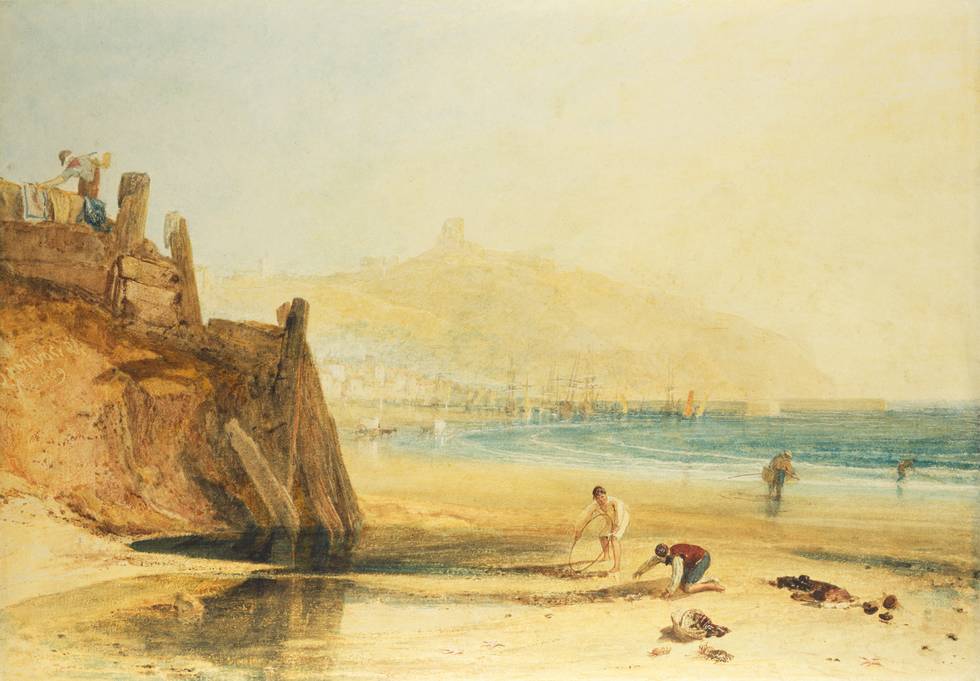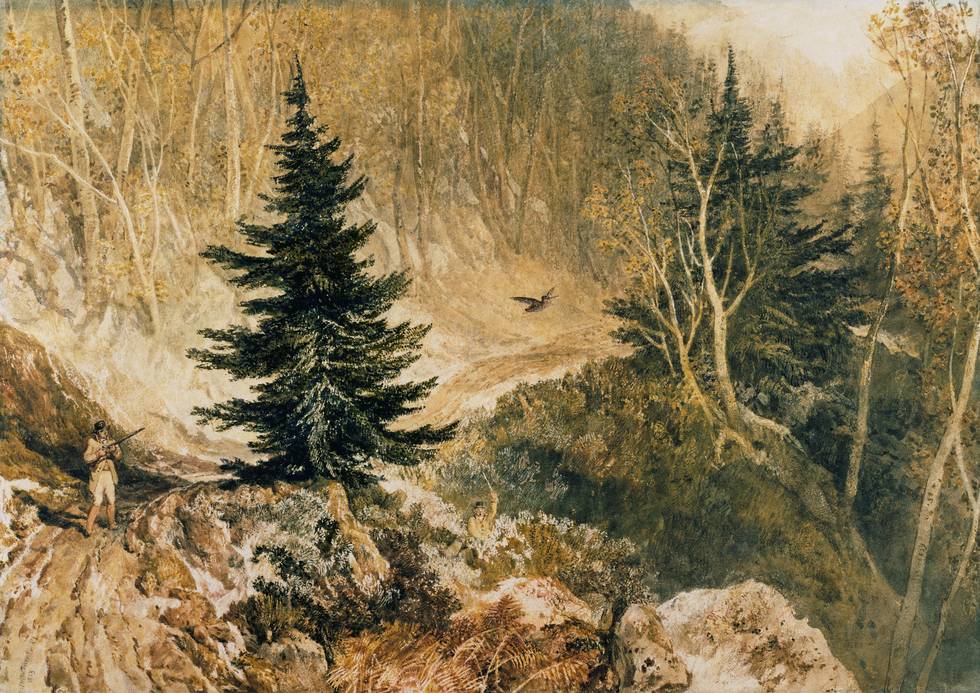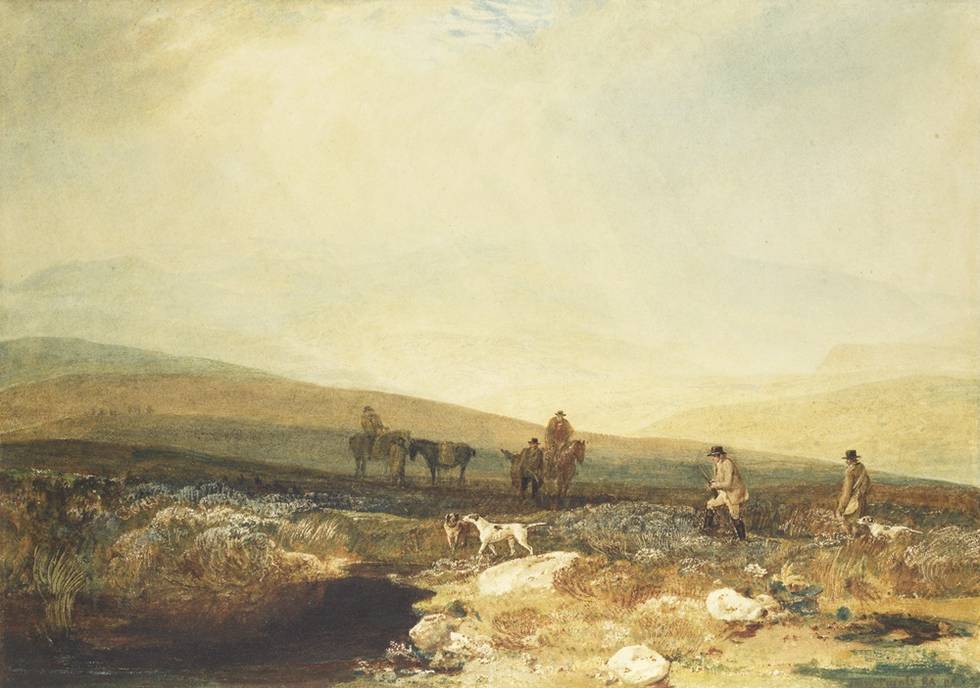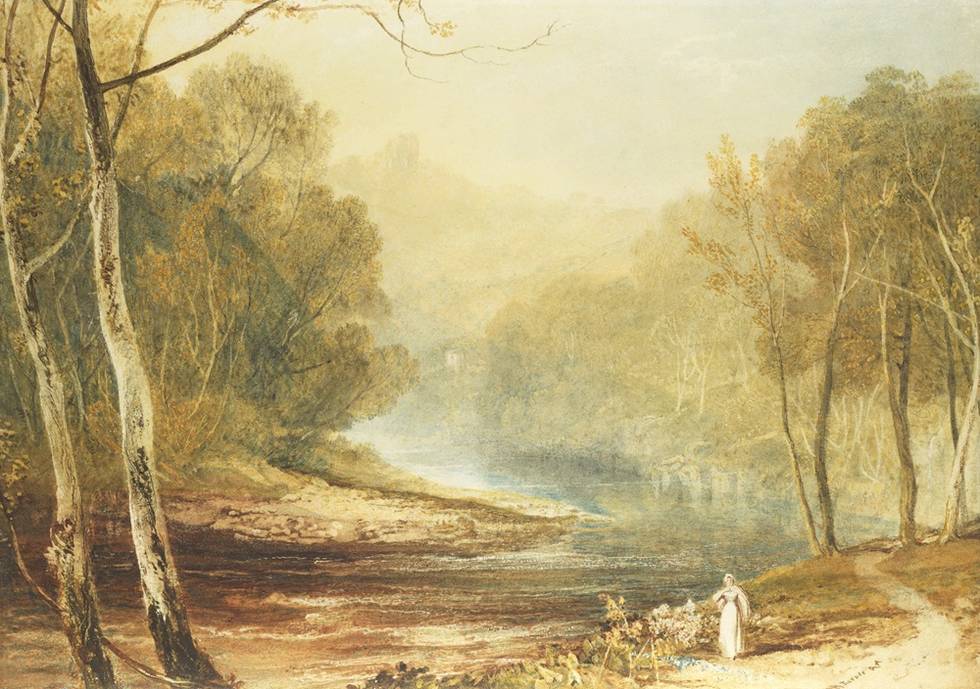Between 1809 and 1816, Turner, already a Royal Academician, painted four views of Yorkshire for Sir William Pilkington, 8th Baronet (1755–1850), of Chevet Hall near Wakefield. Pilkington was the brother-in-law of Turner’s close friend and patron, Walter Fawkes, at whose estate (Farnley Hall, Otley) Turner spent extended holidays almost every year between 1808 and 1824.
Pilkington, who almost certainly met Turner through Walter Fawkes, was a frequent visitor at Farnley, even joining Fawkes’s shooting parties, and is said to be represented shooting woodcock in one of these scenes.
These four detailed and highly finished landscapes were probably intended as a series that celebrated the varied landscape of this large county that Turner and his patrons so admired: coastline, forest, moorland and a steep river valley.
All of them are based on on-the-spot drawings made in his sketchbooks, now part of the Turner Bequest at Tate Britain. Turner then painted the final compositions in his studio in London or, more likely, at Farnley Hall itself. The critic John Ruskin described Turner’s views of Yorkshire as one of the ‘culminating points of Turner’s career’, in which the artist communicated ‘a strong love of place.’



